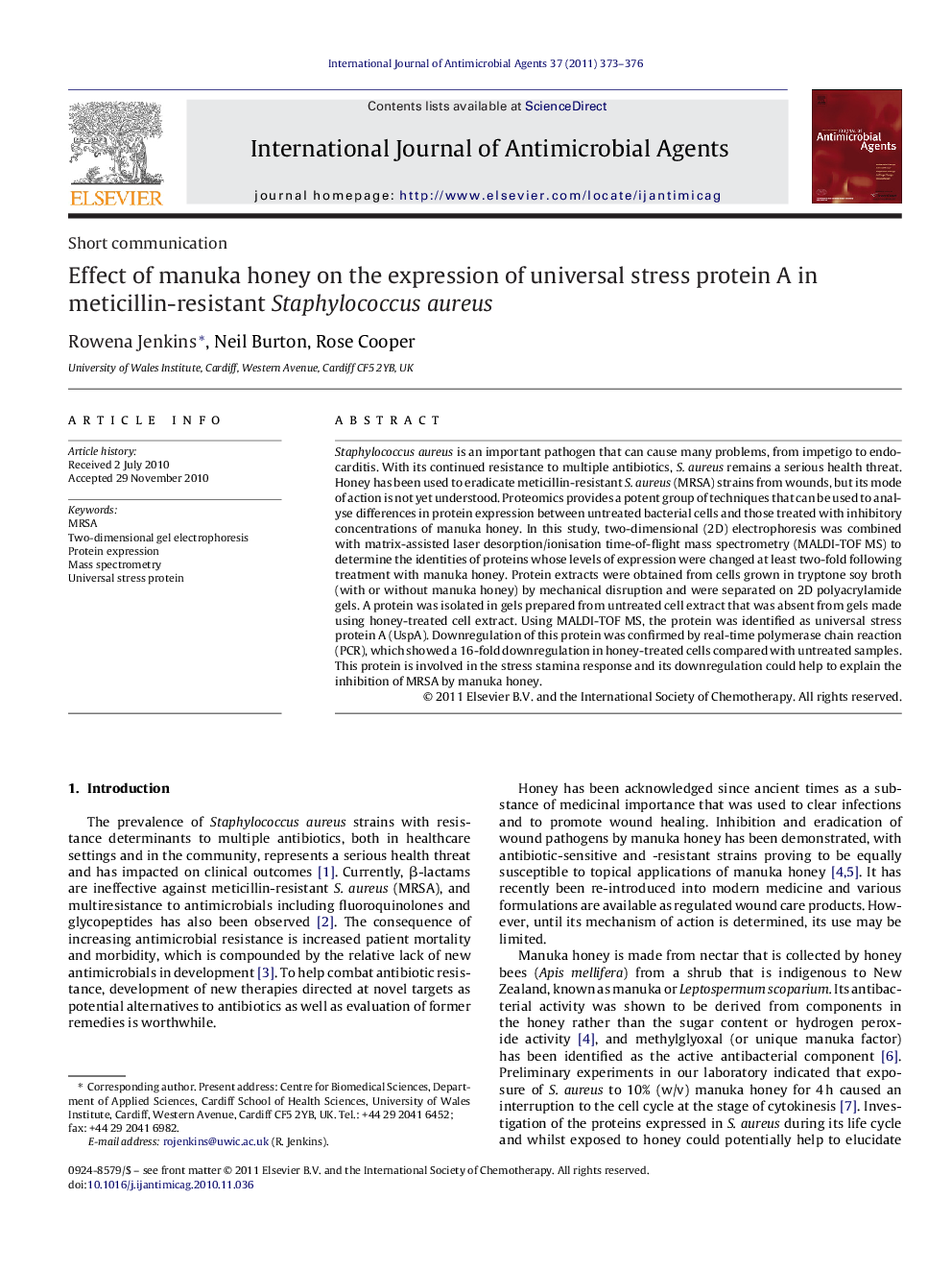| Article ID | Journal | Published Year | Pages | File Type |
|---|---|---|---|---|
| 6118395 | International Journal of Antimicrobial Agents | 2011 | 4 Pages |
Abstract
Staphylococcus aureus is an important pathogen that can cause many problems, from impetigo to endocarditis. With its continued resistance to multiple antibiotics, S. aureus remains a serious health threat. Honey has been used to eradicate meticillin-resistant S. aureus (MRSA) strains from wounds, but its mode of action is not yet understood. Proteomics provides a potent group of techniques that can be used to analyse differences in protein expression between untreated bacterial cells and those treated with inhibitory concentrations of manuka honey. In this study, two-dimensional (2D) electrophoresis was combined with matrix-assisted laser desorption/ionisation time-of-flight mass spectrometry (MALDI-TOF MS) to determine the identities of proteins whose levels of expression were changed at least two-fold following treatment with manuka honey. Protein extracts were obtained from cells grown in tryptone soy broth (with or without manuka honey) by mechanical disruption and were separated on 2D polyacrylamide gels. A protein was isolated in gels prepared from untreated cell extract that was absent from gels made using honey-treated cell extract. Using MALDI-TOF MS, the protein was identified as universal stress protein A (UspA). Downregulation of this protein was confirmed by real-time polymerase chain reaction (PCR), which showed a 16-fold downregulation in honey-treated cells compared with untreated samples. This protein is involved in the stress stamina response and its downregulation could help to explain the inhibition of MRSA by manuka honey.
Keywords
Related Topics
Life Sciences
Immunology and Microbiology
Applied Microbiology and Biotechnology
Authors
Rowena Jenkins, Neil Burton, Rose Cooper,
